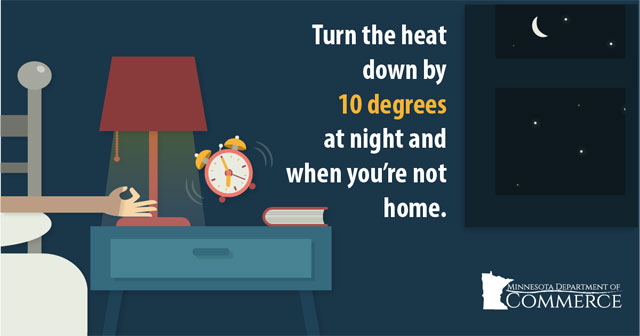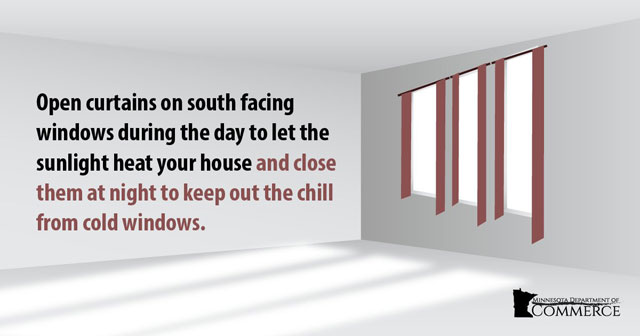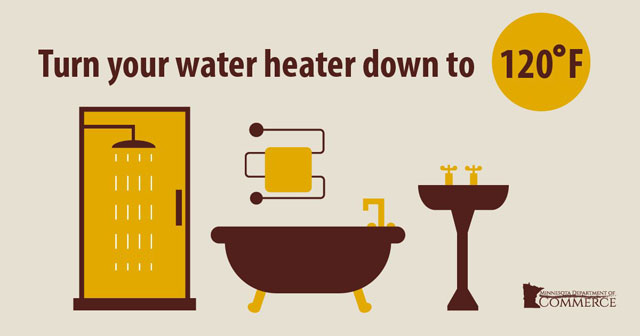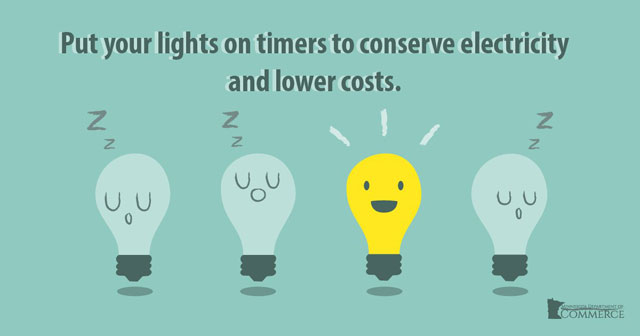There are some basic energy-saving steps we can all take to keep the warm air in and our utility bills down this fall and winter. A few simple no-cost or low-cost measures can make a big difference for the safety, comfort and efficiency of our homes.
The Minnesota Commerce Department, which includes the State Energy Office, offers the following tips:
- Get an energy audit. The first step to energy efficiency is an advanced home energy assessment to diagnose the best ways to save energy. An audit can be arranged through your utility or a nonprofit energy group.
- Lower your thermostat. When you are at home or awake, set your thermostat as low as is comfortable. When you are asleep or away from home, turn your thermostat down about 10 degrees—either manually or with a programmable thermostat. This can reduce your heating bill by about 10 percent.

- Take advantage of heat from the sun. Open curtains on your south-facing windows during the day to allow sunlight to naturally heat your home, and close them at night to reduce the chill you may feel from cold windows.

- Cover drafty windows. Tape clear plastic film to the inside of your window frames during the cold winter months to reduce air leakage around windows.
- Weather strip and caulk windows and doors to eliminate air infiltration.
- Seal air leaks to prevent cold air infiltration around chimneys, vents, pipes and wires. Plugging air leaks is one of the most cost-effective ways to conserve energy and increase comfort—and is the key to preventing ice dams.
- Close your fireplace damper when a fire is not in use and install airtight doors to prevent warm air from escaping. If the fireplace is no longer used, seal the flue with an inflatable plug.
- Maintain your heating system. Replace your furnace filter monthly and have your furnace or boiler inspected annually to ensure maximum efficiency and safety. Also consider replacing mechanical systems if they’re old or inefficient, and clean or replace furnace filters regularly as needed. For wood and pellet-burning heaters, clean the flue vent and the inside of the appliance to improve efficiency.
- Turn down the temperature of your water heater to 120 degrees F. Not only will this save energy, it will reduce the danger of scalding.

- Use light-emitting diode—or LED—holiday light strings to reduce the expense to decorate your home for the holidays.
- Upgrade to LEDs for your entire home lighting. LEDs are the most efficient and longest lasting bulbs.

- Look for the ENERGY STAR® label when purchasing new household products. ENERGY STAR signifies strict energy efficiency and reliability guidelines set by the Environmental Protection Agency and the U.S. Department of Energy.
 |
The Get Answers series on the Energy Stories Blog offers useful tips from CERTs and our partners to help you get to the bottom of your energy efficiency and renewable energy questions. Click here to see more stories in the series >> |


